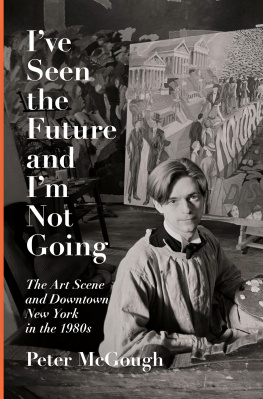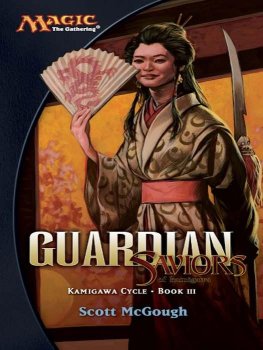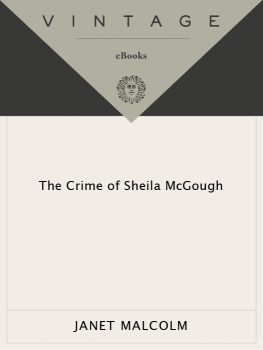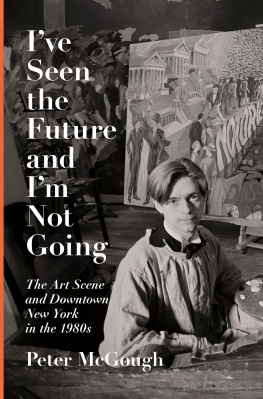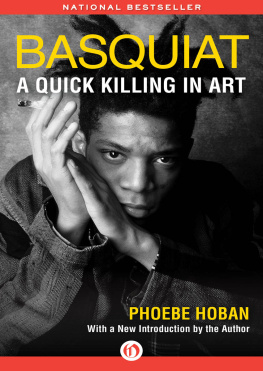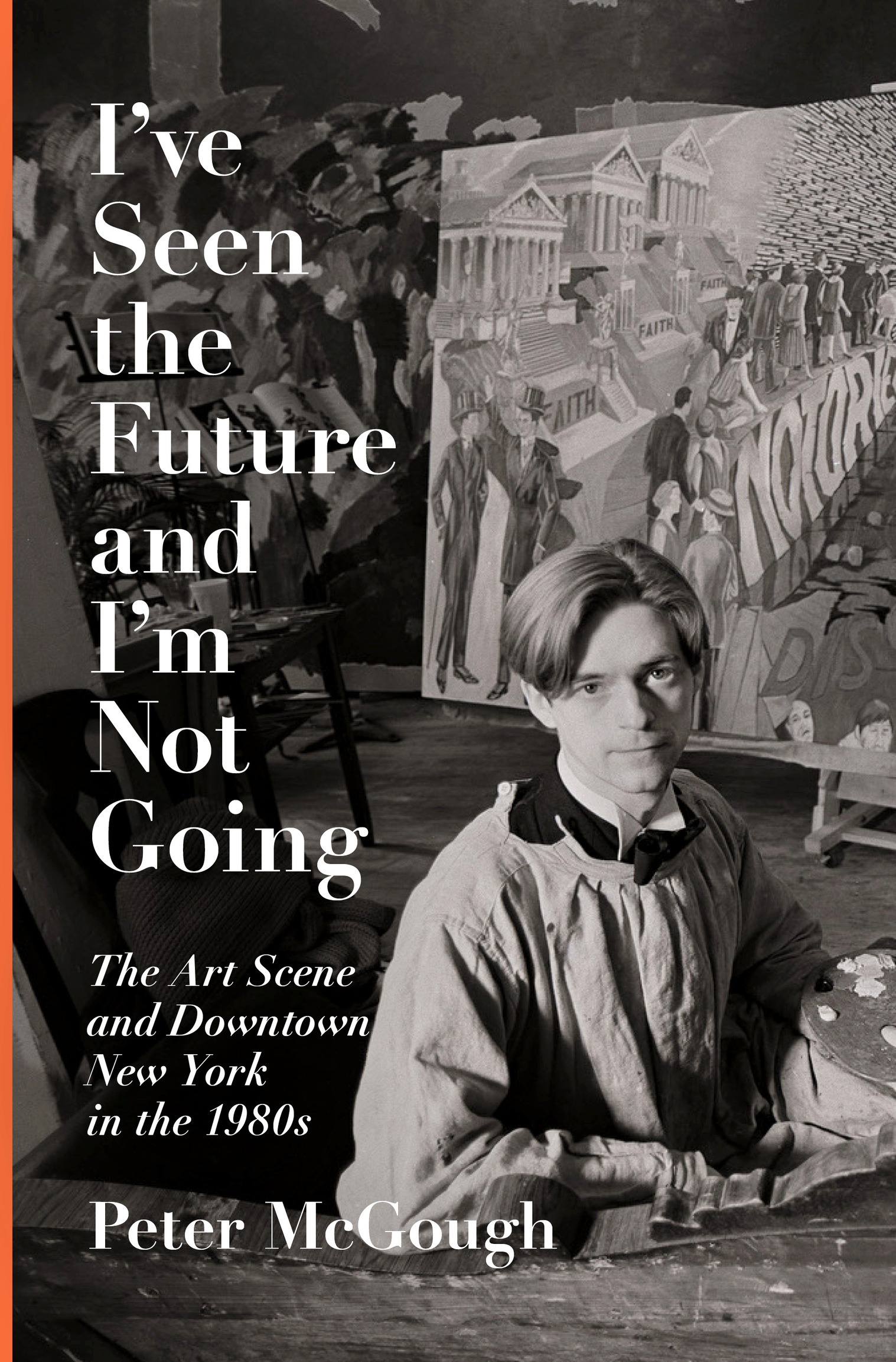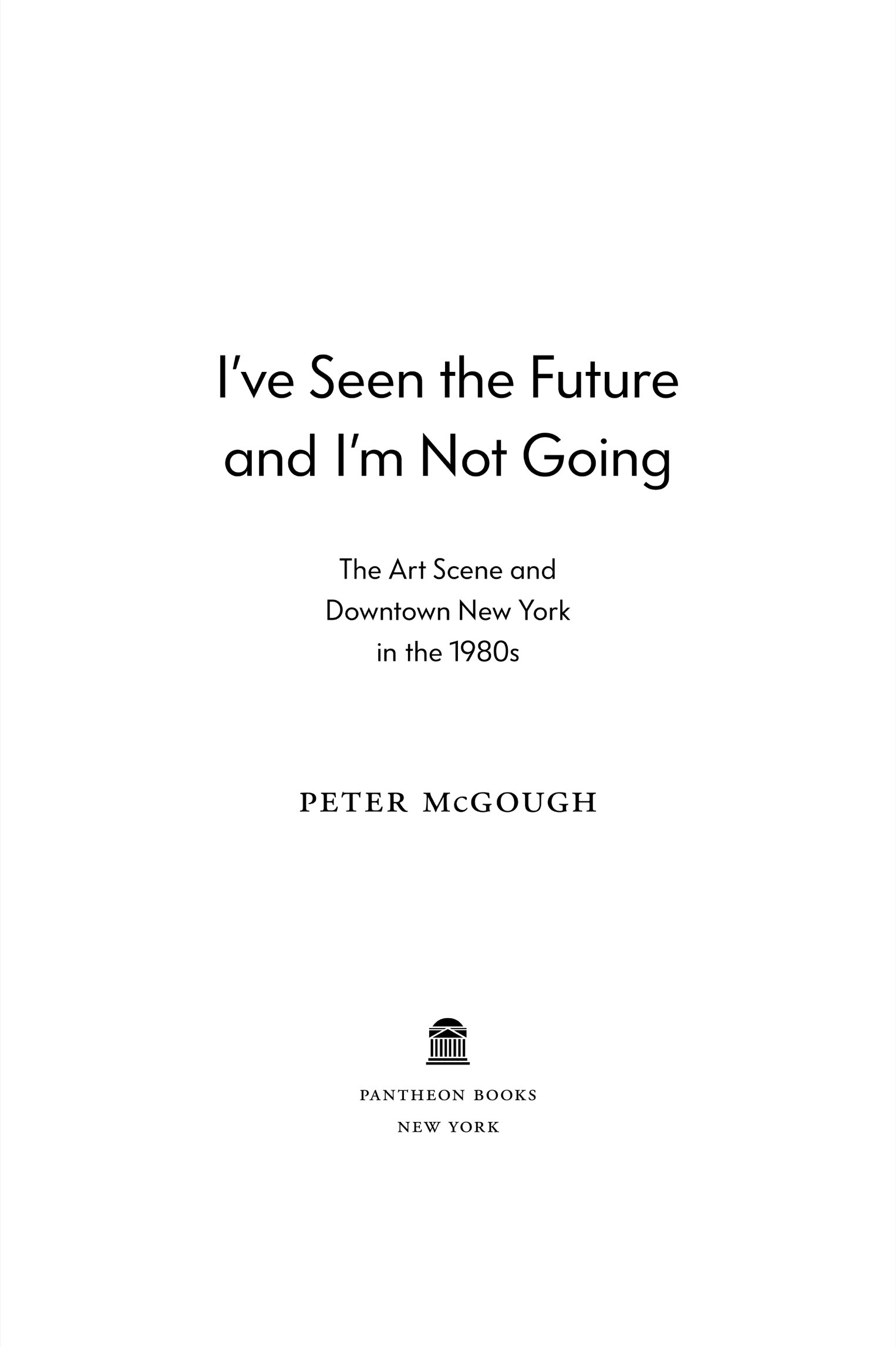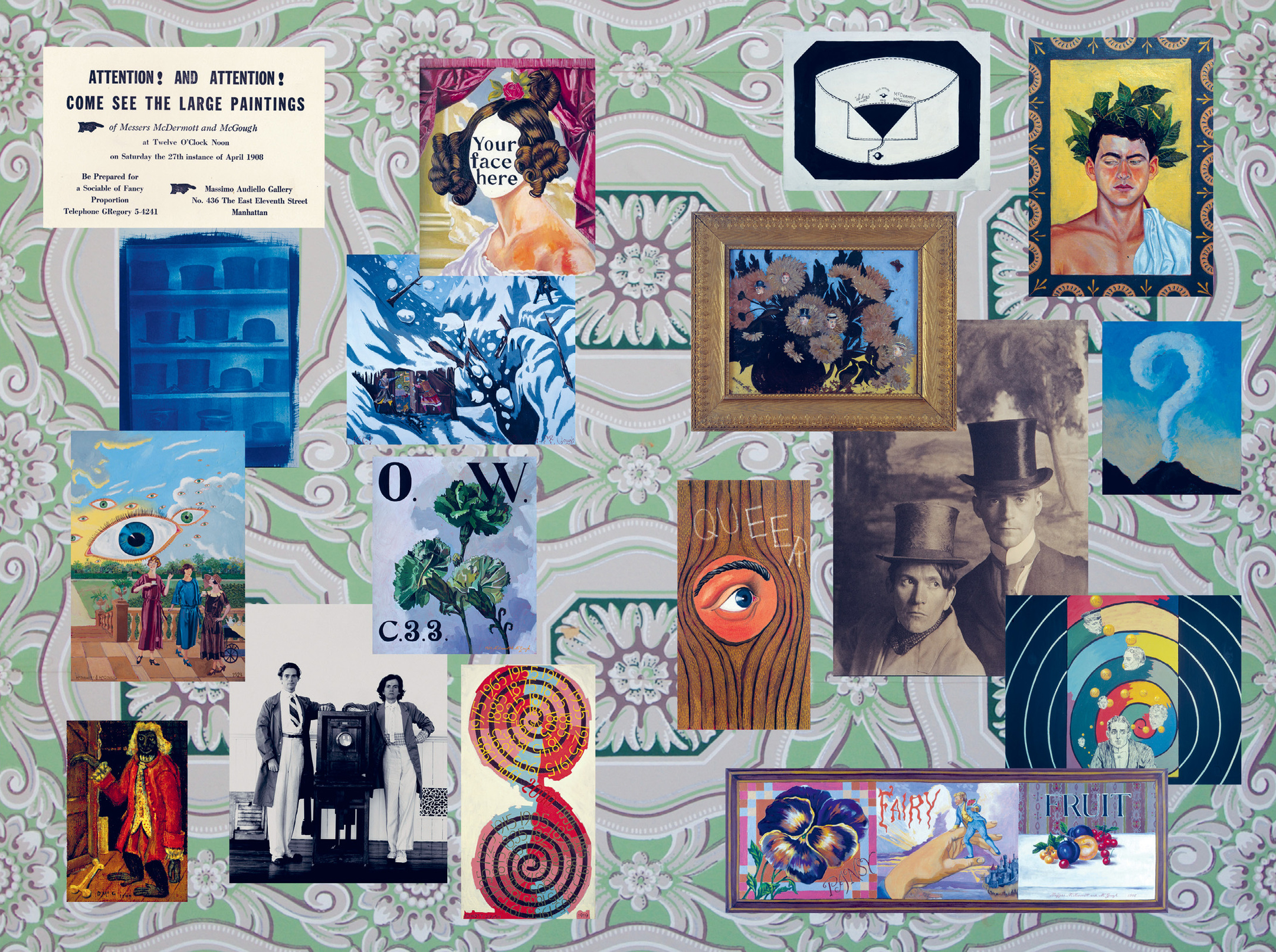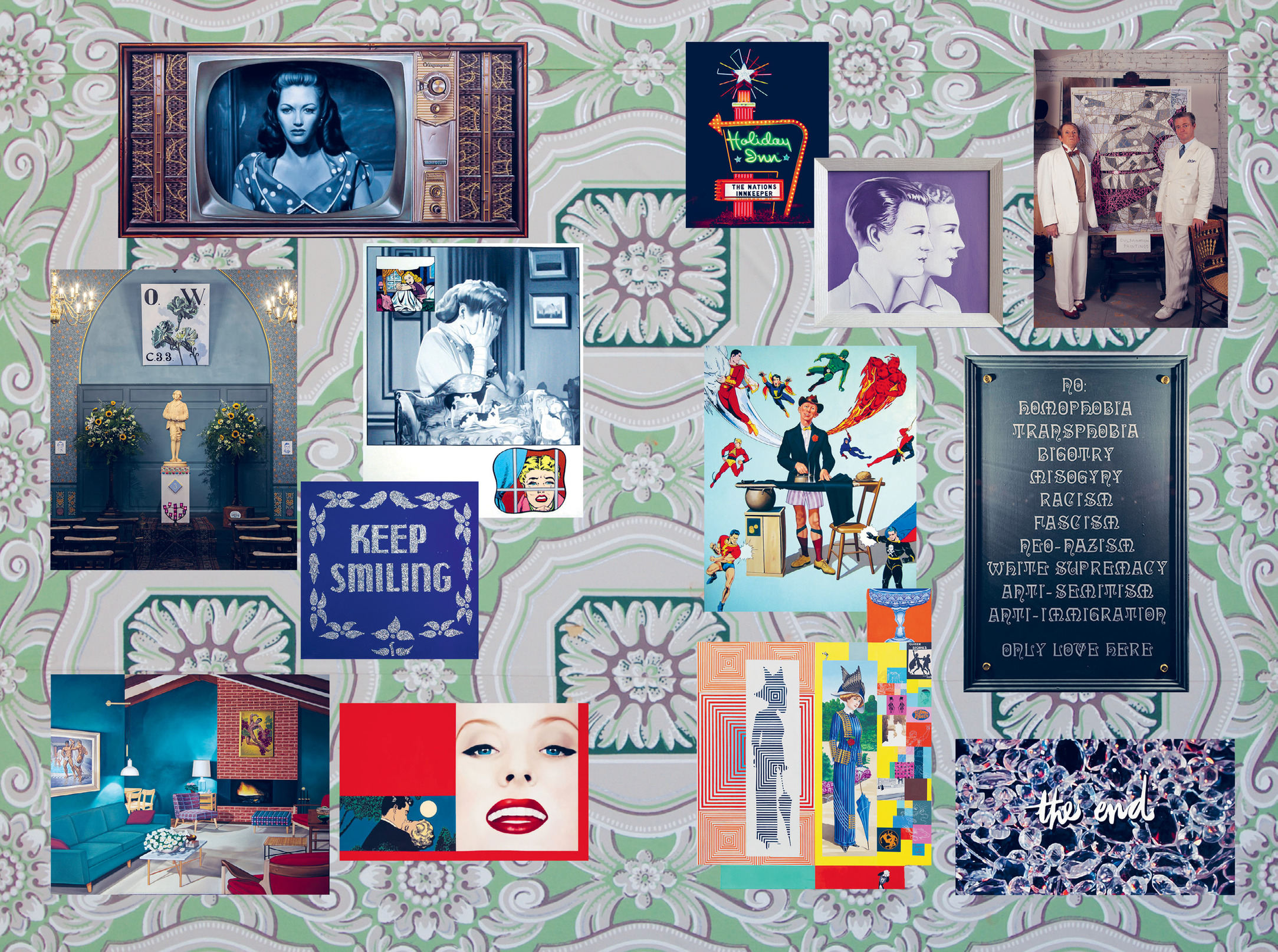All rights reserved. Published in the United States by Pantheon Books, a division of Penguin Random House LLC, New York, and distributed in Canada by Penguin Random House Canada Limited, Toronto.
Pantheon Books and colophon are registered trademarks of Penguin Random House LLC.
Name: McGough, Peter, [date] author.
Title: Ive seen the future and Im not going: the art scene and downtown New York in the 1980s / Peter McGough.
Description: First edition. New York: Pantheon, 2019.
Identifiers: LCCN 2018060306 (print). LCCN 2019000228 (ebook). ISBN 9781524747053 (ebook). ISBN 9781524747046 (hardcover).
Subjects: LCSH : McGough, Peter, [date]. ArtistsNew York (State)New YorkBiography. AIDS (Disease)PatientsNew York (State)New YorkBiography. GaysNew York (State)New YorkBiography.
Classification: LCC N 6537. M 39656 (ebook). LCC N 6537. M 39656 A 2 2019 (print). DDC 700.92dc23
Endpapers: all paintings are by McDermott & McGough; all photographs are by Peter McGough.
Wisdom rises on the ruins of folly.
Acknowledgments
I would like to thank my editor, Shelley Wanger, for her endless patience and tireless help in shaping this book. I am forever grateful to Luke Janklow for suggesting I write my memoir in the first place and to my agent, Emma Parry, for encouraging me at the beginning and subsequently every step of the way.
I could never have done a proposal without the guidance and vision of Eve Claxton and Lizzie Jacobs or the generous support of Alison Gingeras and Piotr Utlanski. I am emormously grateful to Senior Production Editor Kevin Bourke and to Patrick Dillion for his meticulous research and copyediting.
To my friends and family, thank you for your support and encouragement: Mark Arena, Jason Arbuckle, Josef Astor, Allisa Bennet, Jeannette Montgomery Barron, Aileen Corkery, Scott Covert, Wouter Deruytter, Hugo Guinness, Miciah Hussey, Jean Kallina, Michael Kors, David Macke, Elizabeth MacKenzie, Mary Bergtold-Mulcahy, Ryan Ouimet, Jack Pierson, Philip Ramus, John Richardson, Jacqueline Schnabel, Margaret Seiter, and Kate Simon. And last, but not least, many thanks to Ivaylo Gueorgiev for his heroic work on the art and photo research for the book.
I wrote this memoir as I remembered this time in my life. I never kept a journal and there may be parts others will remember differently, but these are stories my friends and I have shared for years.
Prologue
The worst part of being sick, truly sick, was the night. Id shoot awake from a searing pain that started in my toe and ran right up the inside of my leg. Within seconds my whole limb was on fire. After about twenty minutes, the pain would subside, but now I was wide awake. Id lived in Manhattan for most of my adult life, but until I was up nightly, I had never realized how quiet Times Square could be at three in the morning: a stillness that left me defenseless against the crushing thoughts of the past and its glory, and of my present dire circumstances.
It was 1998, I was on the good side of forty, and I was almost dead. Paul Bellman, my doctor, the man who was known for pulling patients off the edge of doom, later told me that when he saw me for the first time, he thought, This person has three months to live. I didnt know it, but his treatment plan wasnt to cure me, which looked impossible even to a man considered one of the best AIDS doctors in the world; his plan was simply to make me comfortable in my final weeks.
A few friends and ex-assistants came to visit. I could tell by their startled faces I must have looked a wreck. I was a skeletal one hundred pounds, covered from head to toe in purple, AIDS-related Kaposis sarcoma sores, with my once thick mane of blond hair now wispy and thin. I greeted my guests in a frayed nightshirt as I sank into a foot-high feather mattress in my antique brass bed, made for McDermott and me by Iskobel Iskowitz, where I spent my days and sleepless nights. The bed was one of the few remnants from my days of grandeur.
Even if I wanted to leave my apartmentwhich I rarely didI could barely manage the stairs. Without savings or livelihood, I was living in the only place I could afford: a glorified attic, five crooked flights of stairs above Forty-Sixth Street in Midtown ManhattanLittle Brazilin a slanting nineteenth-century town house. And, for the first time in my adult life, I was living alone.
Only a few blocks away from the stone lions of the stately New York Public Library, the street floor of this once grand house was now a Japanese restaurant for the lunchtime business crowd. From my sickbed at night I could hear the rats fighting over the scraps of mid-priced sushi in the back garden. The second floor had a Brazilian hair salon that specialized in bikini waxing. The sexy Latino proprietor would stand in the window with his uniform of skintight black jeans and a form-fitting dark T-shirt, overseeing the needs of his clients and his coterie of beautiful assistants. The third floor was an Asian Beauties massage parlor. I painted a sign and taped it to my door that read, WHORES ON 3RD FLOOR! DONT BOTHER TO KNOCK! , to stop the familiar, soft tapping from their late-night clientele. After a raid closed the massage parlor I broke the police lock and chain on the door to see what was there. The Victorian ornament around the ceiling, now crumbling, was painted black like the walls and the indoor/outdoorupholstered cube where clients waited for attention. I peeked into the sad little single rooms where men would get massaged. As though frozen in time after the raid, there were still large plastic bottles of economy-sized body lotion and rumpled sheets. At the end of the hallway was a washer/dryer that had stopped in midwash amongst a pile of dirty sex towels. A bok choy dish was still on a dirty hot plate, and melted votive candles were strewn about the soggy-carpeted floor.
Above this pleasure palace, on the fourth floor lived a thin, pale artist, Chivas Clem, who had told my friend Jane Rosenblum about the apartment. I could always tell when it was eleven a.m. because his alarm clock would ring for an hour while he was in deep, medicated slumber. Chivas was the director of the Pat Hearn art gallery, aka PHAG, in Chelsea. It was one of the first three galleries to move from SoHo to Chelsea, along with Matthew Marks and Morris-Healy. I showed with Pat in the eighties when she was in the East Village. After Pats death in 2000 her husband, Colin de Land, took over the gallery space.
Chivass apartment also doubled as a gallery he called the Fifth International, where he put on exhibitions. One evening Chivas heard me in the hallway and invited me in for a drink. I noticed the remains of drugs on an overturned

